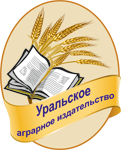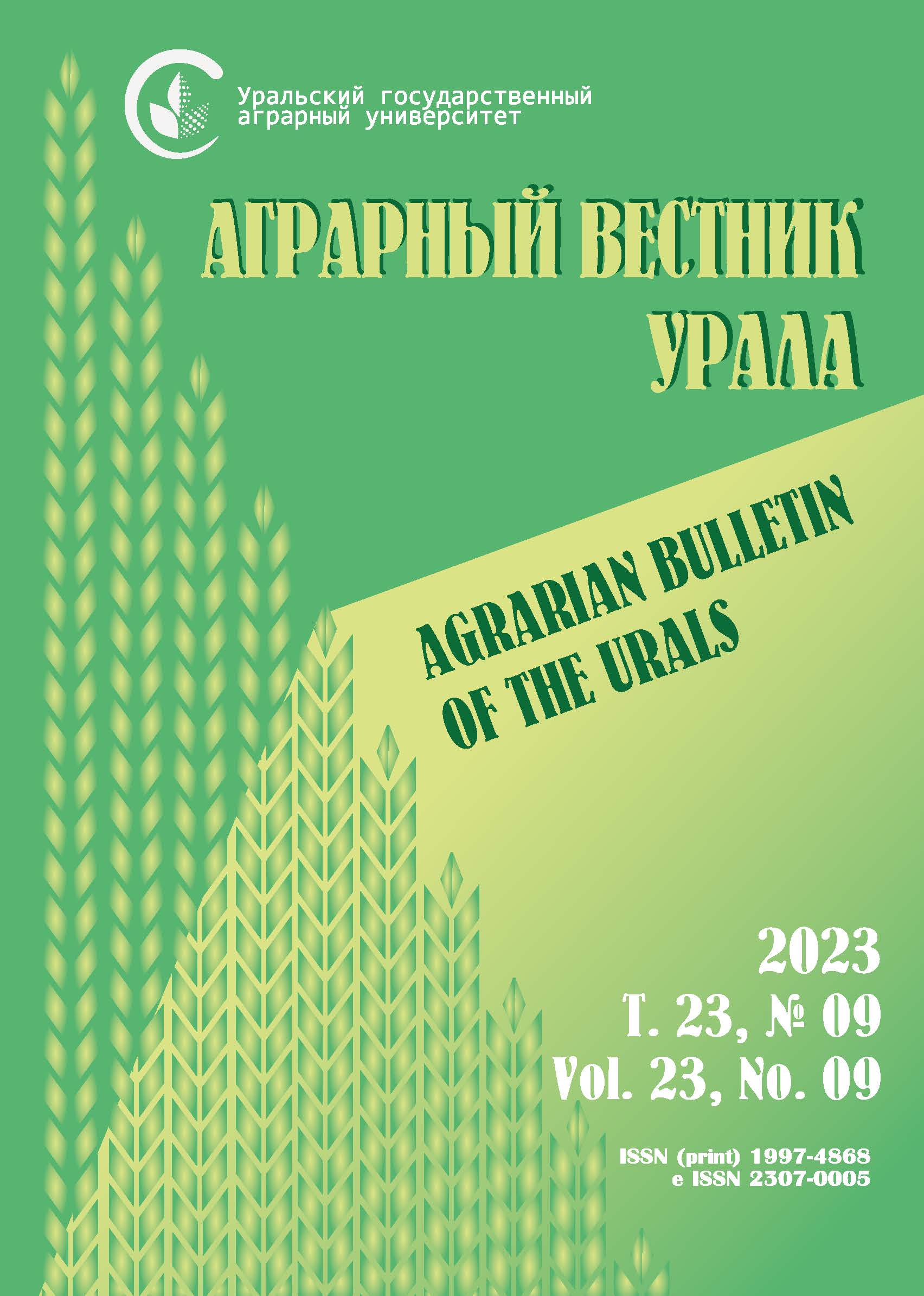Abstract. In the last decade, garden varieties of Siberian iris (Iris sibirica L.) of the iris family (Iridaceae Juss.), which are valuable not only as ornamental plants, but also as a source of biologically active substances used in medicine and the perfume industry, have been very popular. Information on the presence of these substances in the generative and vegetative organs of the varieties of Siberian iris studied by us was not noted, which is the novelty and relevance of this work. The purpose of the study is a comparative study and assessment of the quantitative content of biologically active substances in the flowers and leaves of I sibirica and seven varieties from the Siberian irises (SIB) group cultivated in the forest-steppe zone of Western Siberia. Methods. The content of flavonols, catechins, carotenoids was determined by the spectrophotometric method, pectin substances by the carbazole-free spectrophotometric method and tannins by the titrimetric method. Results. The results of a comparative analysis of secondary metabolites in the aerial organs of irises showed that the content of tannins (1.3–3.2 times), flavonoids (1.5–4.6 times), catechins (5.0–6.3 times), carotenoids (2.6–9.5 times) higher in leaves than in flowers. The content of pectins is higher (3.5–9.5 times) and protopectins (1.2–1.9 times) in flowers. The varieties Fialcovy, Vals Katuni, Kassandra were distinguished by the highest indications for individual components. Variety and species specificity in the distribution of these components in the flowers and leaves of plants, as well as the influence of hydrometrological factors during the growing seasons of growth and development of 2020–2021, were noted. Scientific novelty. For the first time in the conditions of the forest-steppe zone of the Novosibirsk region, a comparative quantitative analysis of the content of tannins, flavonols, pectins, protopectins, catechins, carotenoids in the aboveground organs of Iris sibirica and its varieties: Baltik Blue, Blue Cup, Cambridge, Fialcovy, Kassandra, Mandy Morse, Vals Katuni was carried out.
Iris sibirica, varieties, flower, leaf, tannins, flavonols, pectins, protopectins, catechins, carotenoids, forest-steppe zone, Western Siberia
1. Kostić A. Ž., Gašić U. M., Pešić M. B., Stanojević S. P., Barać M. B., Mačukanović-Jocić M. P., Avramov S. N., Tešić Ž. L. Phytochemical analysis and total antioxidant capacity of rhizome, above-ground vegetative parts and flower of three Iris species // Chemistry & Biodiversity. 2019. Vol. 16 (3). Article number 1800565. DOI:https://doi.org/10.1002/cbdv.201800565.
2. Antipova E. A., Leytes E. A. Opredelenie soderzhaniya ksantonov i elementnogo sostava nadzemnoy chasti i ekstrakta Iris lactea Pall. // Himiya rastitel'nogo syr'ya. 2019. № 2. S. 189-196. DOI:https://doi.org/10.14258/jcprm.20190240115. EDN: https://elibrary.ru/CCJOMX
3. Sedel'nikova L. L., Kukushkina T. A. Soderzhanie nekotoryh grupp soedineniy v list'yah i kornevischah Iris hybrida hort. sort Coronation // Himiya rastitel'nogo syr'ya. 2018. № 2. C. 131-136. DOI:https://doi.org/10.14258/jorm.2018023476. DOI: https://doi.org/10.14258/jcprm.2018023476; EDN: https://elibrary.ru/URNTAK
4. Tešić Ž. L. Phytochemical analysis and total antioxidant capacity of rhizome, above-ground vegetative parts and flower of three Iris species // Chemistry & Biodiversity. 2019. Vol. 16 (3). Article number e1800565. DOI:https://doi.org/10.1002/cbdv.201800565.
5. Liu Q. Q., Zhang Y. X, Wang Y. J., Wang W. L., Gu C. S., Huang S. Z., Yuan H. Y., Dhankher O. P. Quantitative proteomic analysis reveals complex regulatory and metabolic response of Iris lactea Pall. var. chinensis to cadmium toxicity // Journal of Hazardous Materials. 2020. Vol. 400. DOI:https://doi.org/10.1016/j.jhazmat.2020.123165. EDN: https://elibrary.ru/NWCQAH
6. Goldblatt P. Phylogeny and classification of the Iridaceae and the relationships of Iris // Annali di Botanica. 2000. Vol. 58. Pp. 13-28. DOI:https://doi.org/10.4462/annbotrm-9059.
7. Luzhanin V. G., Ueyli A. K., Ponkratova A. O., Zhohova E. V., Zingalyuk M. A., Pryahina N. I. Kasatik molochno-belyy (Iris lactea Pall.) - perspektivnyy istochnik biologicheski aktivnyh veschestv // Himiya rastitel'nogo syr'ya. 2021. № 3. S. 5-17. DOI:https://doi.org/10.14258/jcprm.2021038890. EDN: https://elibrary.ru/XMOZAL
8. Khatib S., Faraloni C., Bouissane L. Exploring the Use of Iris Species: Antioxidant Properties, Phytochemistry, Medicinal and Industrial Applications // Antioxidants. 2022. Vol. 11 (3). Article number 526. DOI:https://doi.org/10.3390/antiox11030526. EDN: https://elibrary.ru/DOIXDV
9. Askerova L. A. Ekologicheskaya valentnost' nekotoryh vidov irisov zapadnoy chasti Azerbaydzhana // Byulleten' nauki i praktiki. 2019. T. 5. № 10. S. 50-55. DOI:https://doi.org/10.33619/2414-2948/47/06. EDN: https://elibrary.ru/OUPUAD
10. Beksheneva L. F., Reut A. A. Vodnyy rezhim nekotoryh predstaviteley roda Iris pri introdukcii na Yuzhnom Urale // Ekosistemy. 2020. № 22. S. 82-89. DOI:https://doi.org/10.37279/2414-4738-2020-22-82-89. EDN: https://elibrary.ru/RYKKNL
11. Kryuhova A., Mustafina A. N., Abramova L. On the rare species biology of the genus Iris L. in culture and natural habitats in the South Urals // BIO Web Conferences. 2020. Vol. 24. International Conference “Plant Deversity: Status, Trends, Conservation Concept”. Article number 00046. DOI: 0.1051/bioconf/20202400046. EDN: https://elibrary.ru/WOPPOU
12. Vronskaya O., Tsandekova O. Analyses of morphobiochemical characteristies of the Iris genus within of conditions of the Kuzbass botanic garden // BIO Web. Conferences. 2020. Vol. 24. International Conference “Plant Deversity: Status, Trends, Conservation Concept”. Article number 00097. DOI:https://doi.org/10.1051/bioconf/20202400097.
13. Reut A. A., Beksheneva L. F. Sravnitel'naya ocenka ekologo-fiziologicheskih osobennostey vidov roda Iris // Vestnik KrasGAU. 2021. № 7. S. 35-42. DOI:https://doi.org/10.36718/1819-4036-2021-7-35-42. EDN: https://elibrary.ru/NKLQVC
14. Aukhadieva E., Kalashnik N., Ishbirdin A. Discussion of some tahonomy issues of species of the genus Iris L. based of biomorphological and karyological characteristics // BIO Web Conferences. 2021. Vol. 254. International Conference and Practical Conference “Fundamental and Applied Research in Biology and Agriculture: Current Issues Achievements and Innovations”. Article number 06008. DOI:https://doi.org/10.1051/e3sconf/202125406008. EDN: https://elibrary.ru/NMBYRS
15. Tsandekova O., Vronskaya O. Appraisal of perspectivity of growing of decorative perennials of genus Iris L. for introduction // BIO Web Conferences. 2021. Vol. 31. VI International Scientific Conference “Problems of Industrial Botany of Industrially Developed Regions”. Article number 00028. DOI:https://doi.org/10.1051/bioconf/20213100028. EDN: https://elibrary.ru/ZLRDHO
16. Reut A. A., Beksheneva L. F. Toksikanty I klassa opasnosti v dekorativnyh travyanistyh mnogoletnikov // Tavrich. Vestnik Agrarnoy nauki. 2022. № 1 (22). S. 132-144.
17. Beksheneva L. F., Reut A. A. Itogi izucheniya karlikovyh borodatyh irisov pri introdukcii v Yuzhno-Ural'skiy botanicheskiy sad-institut UFIC RAN // Subtropicheskoe i dekorativnoe sadovodstvo. 2019. № 71. S. 29-35. DOI:https://doi.org/10.31360/2225-3068-2019-71-29-35. EDN: https://elibrary.ru/PLMNCB
18. Dolganova Z. V. Perspektivnye sorta irisa Spuria dlya usloviy lesostepi Altayskogo kraya // Subtropicheskoe i dekorativnoe sadovodstvo. 2019. № 70. S. 28-37. DOI:https://doi.org/10.31360/2225-3068-2019-70-28-37. EDN: https://elibrary.ru/SZHDQT
19. Sorokopudova O. A. Formirovanie gibridnogo fonda travyanistyh dekorativnyh mnogoletnikov v FGBNU VSTISP // Subtropicheskoe i dekorativnoe sadovodstvo. 2019. № 71. S. 139-144. DOI:https://doi.org/10.31360/2225-3068-2019-71-139-144. EDN: https://elibrary.ru/QLEBVL
20. Mironova L. N., Kalinkina V. N. Reproduktivnye osobennosti Dal'nevostochnyh vidov roda Iris (Iridaceae) v usloviyah ex situ // Rastitel'nye resursy. 2022. T. 58. № 3. S. 244-253. DOI: https://doi.org/10.31857/S0033994622030086; EDN: https://elibrary.ru/OYNGBO
21. Sedel'nikova L. L. Sortiment, sezonnoe razvitie i razmnozhenie karlikovyh irisov na yuge Novosibirskoy oblasti // Vestnik KrasGU. 2022. № 2. S. 70-78. DOI:https://doi.org/10.3618/1819-4036-2022-2-70-78.
22. Sedel'nikova L. L., Candekova O. L. Ocenka soderzhaniya biologicheski aktivnyh veschestv i himicheskih elementov v list'yah host i irisa gibridnogo v zelenyh nasazhdeniyah Novosibirskoy oblasti // Izvestiya Saratovskogo universiteta. Novaya seriya. Seriya: Himiya. Biologiya. Ekologiya. 2022. T. 22. Vyp. 4. S. 419-426. DOI:https://doi.org/10.18500/1816-9775-2022-22-4-419-426. EDN: https://elibrary.ru/PARRRZ
23. Sedel'nikova L. L. Morfobiologicheskaya harakteristika sorta Iris ensata ‘Vasiliy Alferov’ na yuge Zapadnoy Sibiri // Vestnik Orenburgskogo gosudarstvennogo pedagogicheskogo universiteta. 2023. № 1 (45). S. 19-30. DOI:https://doi.org/10.32516/2303-9922.2023.45.2. EDN: https://elibrary.ru/KGPVGM
24. Dolganova Z. V. Izuchenie sortov irisa klassa «Sibirskie» v usloviyah lesostepi Altayskogo kraya // Subtropicheskoe i dekorativnoe sadovodstvo. 2018. Vyp. 65. S. 40-47. EDN: https://elibrary.ru/XTCIDZ
25. Slepchenko N.A., Shoshina E.I. K voprosu o razrabotke metodiki ocenki sortov irisa sibirskogo (I. sibirica) dlya ispol'zovaniya ih v ozelenenii // Subtropicheskoe i dekorativnoe sadovodstvo. 2018. № 67. S. 64-72. DOI:https://doi.org/10.31360/2225-3068-2018-67-64-72. EDN: https://elibrary.ru/YSWZDN
26. Dolganova Z. V. Selekcionnye dostizheniya po sibirskim irisam na yuge Zapadnoy Sibiri // Subtropicheskoe i dekorativnoe sadovodstvo. 2019. № 71. S. 132-139. DOI:https://doi.org/10.31360/2225-3068-2019-71-132-139. EDN: https://elibrary.ru/WBPEEV
27. Shoshina E. I., Slepchenko N. A. Novye sorta irisa sibirskogo v kollekcii Vserossiyskogo nauchno-issledovatel'skogo instituta cvetovodstva i subtropicheskih kul'tur // Subtropicheskoe i dekorativnoe sadovodstvo. 2019. № 69. S. 89-96. DOI:https://doi.org/10.31360/2225-3068-2019-69-89-96. EDN: https://elibrary.ru/LMZRIL
28. Sedel'nikova L. L. Sezonnoe razvitie sibirskih irisov v lesostepnoy zone Novosibirskoy oblasti // Vestnik Orenburgskogo gosudarstvennogo pedagogicheskogo universiteta. 2020. № 3 (35). S. 42-52. DOI:https://doi.org/10.32516/2303-9922.2020.35.4. EDN: https://elibrary.ru/WSPSUF
29. Slepchenko N. A., Slepchenko K. V. Izuchenie dekorativnosti sortoobrazcov Iris sibirica v usloviyah vlazhnyh subtropikov Rossii // Subtropicheskoe i dekorativnoe sadovodstvo. 2020. № 75. S. 28-33. DOI:https://doi.org/10.31360/2225-3068-2020-75-28-33. EDN: https://elibrary.ru/BUFMEE
30. Sedel'nikova L. L., Kukushkina T. A. Biologicheski aktivnye i zapasnye veschestva v vegetativnyh organah Hemerocallis hybrida sorta Bambery Crismas // Himiya rastitel'nogo syr'ya. 2022. № 1. S. 153-160. DOI:https://doi.org/10.14258/jcprm.2022019544. EDN: https://elibrary.ru/DFSNAY









